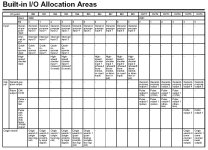Blacknight_81
Member
- Join Date
- Oct 2003
- Posts
- 13

Hi,
I am working on a project to upgrade a control cabinet for assembly machine. We are thinking also to replace some CAM_SWITCHES with OMRON Incremental Rotary Encoder E6C2-6. I just to know if someone knows how to program this encoder with OMRON CJ1 modular plc?
Thanks
I am working on a project to upgrade a control cabinet for assembly machine. We are thinking also to replace some CAM_SWITCHES with OMRON Incremental Rotary Encoder E6C2-6. I just to know if someone knows how to program this encoder with OMRON CJ1 modular plc?
Thanks







